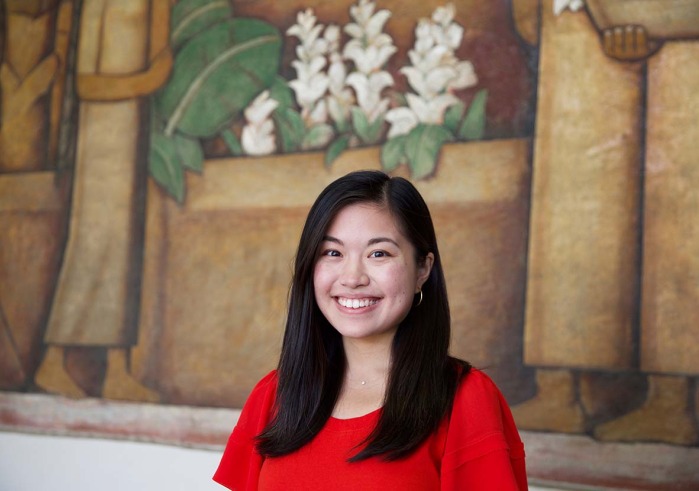Lauren Ng ’19 Is Following a Sustainable Career Path

A project with SUA faculty during her sophomore year had the unexpected benefit of setting Lauren Ng ’19 on her career path. Before that opportunity, Ng, who is the sustainability coordinator at Scripps College, wasn’t sure where her interest in protecting the environment would lead her after graduation.
“My job is definitely drawing from what I did at SUA,” Ng said. “One thing that I like to tell people about my experience as an undergrad is that I am really glad I had the opportunity to work really closely with faculty.”
As a high school student in Modesto, Calif., Ng discovered SUA when researching colleges online. From the start, she liked what she saw. Her family, however, hadn’t heard of the college and weren’t sure it was the right choice. Ng followed her instincts, and after a visit to campus she was certain. “I thought it was a really cool university,” she said. “I liked its mission and the types of courses SUA offered. I just kind of went on a limb and applied, and I’m glad I did.”
She admits it was also hard to explain to her family and friends how she’d turn her passion for the environment into a career, in part because she wasn’t clear about her direction herself. “There are so many options because the field is so broad,” she said. “I think the way that I’ve been interested in the environment has changed, but I’ve never not been interested in it. I’m constantly learning more about it.”
In spring of 2017, Ng and three other students worked with M. Robert Hamersley, assistant dean of faculty, professor of biogeochemistry, and director of the science lab, on an independent study. The project was ambitious–taking a full assessment of SUA’s potential environmental impact. The assessment was used for SUA to participate in the Sustainability Tracking Assessment and Rating System (STARS), which is used by colleges and universities to measure and benchmark their impact.
Ng enjoyed the experience enough that after graduation, she participated in a 10-month program through Strategic Energy Innovations in which people are paired with an organization to do similar evaluations. She worked at the University of California, San Francisco, getting a glimpse of sustainability efforts at a much larger institution. Ng said the University of California’s goal to cut carbon emissions as well as the funding it can offer to researchers in the field are two examples of how much impact the state university system can have on the environment.
Ng’s experiences at SUA and UC were key to landing her job at Scripps, she said. While she is not the first to hold the position at Scripps, one of the Claremont Colleges, it had been left unfilled during the first year of the pandemic. Ng, who started in September, said her role requires a bit of detective work, as she has spent much of her time reviewing documents and learning what her predecessor had done. Ng does greenhouse gas accounting, in which she looks at the purchases the college makes and their impact on the environment. That includes everything from utilities-purchased electricity and natural gas, to the indirect emissions from employee commutes and study abroad travel.
“It’s nice that at a smaller college you have your own ecosystem, and in some ways changes are easier to make,” she said. “In other ways it is harder to have impact because you don’t have the scale.”
Ng expects one day to attend graduate school, but working with colleges offers a lot of satisfaction for her now. Colleges understand the importance of monitoring their environmental impact not only to address climate change, but because prospective students are increasingly demanding it. “There’s a strong consciousness around sustainability and students expect it from their schools,” Ng said. “Sustainability is an important factor in their decisions.”
